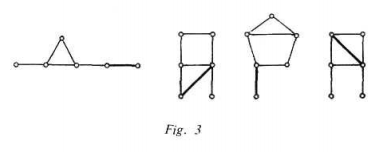An hierarchical clustering algorithm for (finite) sets of points in a given metric space is essentially determined by its linkage criterion, which defines the distance between arbitrary (finite) sets of points with respect to a given distance between single points.
The corresponding Wikipedia page exhibits a simple example of points in $\mathbb{R}^2$ but all the linkage criteria which are considered seem to provide the same dendrogram (with respect to Euclidean distance).
So I am looking for
a smallest distribution of points in $\mathbb{R}^2$ with property P
where property P means that each of the following linkage criteria (with respect to Euclidean distance) yields a genuinely different result:
I am looking for an answer like that for
a smallest asymmetric non-trivial graph
which is one of the following:

[from Asymmetric graphs by P. Erdös and A. Renyi]
